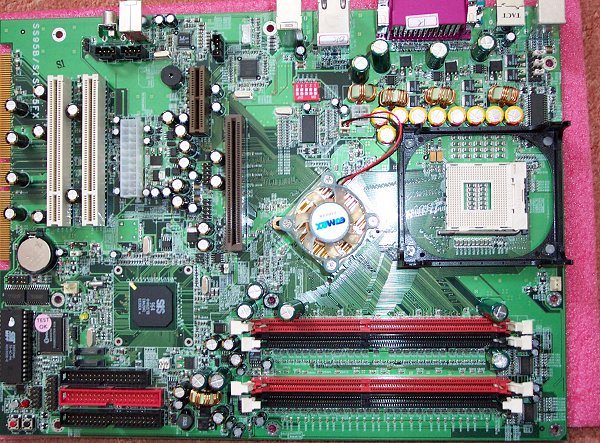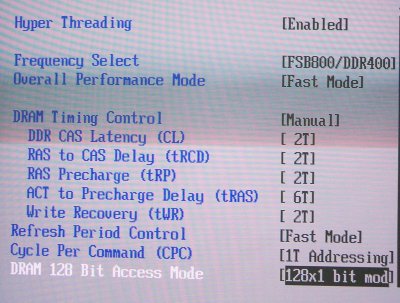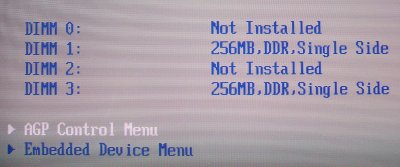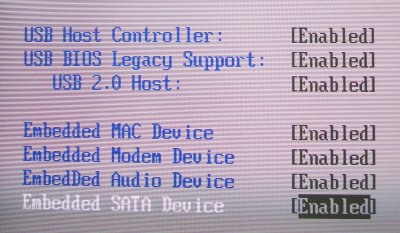Reference board and BIOS
SiS was kind enough to send us a reference board. Please note that the performance and feature set of a reference board is often not indicative of a full retail example's. We'll use the reference board as a rough yardstick for assessing the new chipset.

Signature dual-channel running is pretty conspicuous on the left. We're sure you've seen it a thousand times before on various Springdales, Cantewoods, nForce2s and now on the Opteron / FX-51s. Some reference boards do resemble finished offerings, this one clearly doesn't. The 20-pin power connector is sandwiched on the left-hand side and voltage manipulation, be it CPU, DIMM or chipset, is undertaken via jumpers. You'll soon learn that the board didn't allow for multiplier unlocking. This simple fact presented a problem in evaluating its FSB potential.
Interestingly, once the on-chip SATA was activated, it manually showed up as a SiS 180 controller, which is a natural add-on the 964. We'll discuss the difficulties we ran into on the next page. It also appears as if this sample is bereft of a South Bridge heatsink. The PCB colouring suggests that one is usually in place. The board's non-standard size demanded that it be tested out of the confines of our regular testing case, a Lian Li PC60. We're adamant that all retail examples will conform to ATX specification.
BIOS


It's important to understand that each and every SiS655FX supports Intel's Hyper-Threading by default. That's not always been the case with SiS, so it's now on an even keel with Intel, barring features such as CSA. Our regular 2-6-2-2 timings with a 1T addressing command were inputted for formal benchmarking. The 128-bit performance mode was used, as two Corsair XMS3500 C2 sticks were run in dual channel configuration.

A decent number of features emanate from the 964 South Bridge. Shame there's no FireWire, though.









